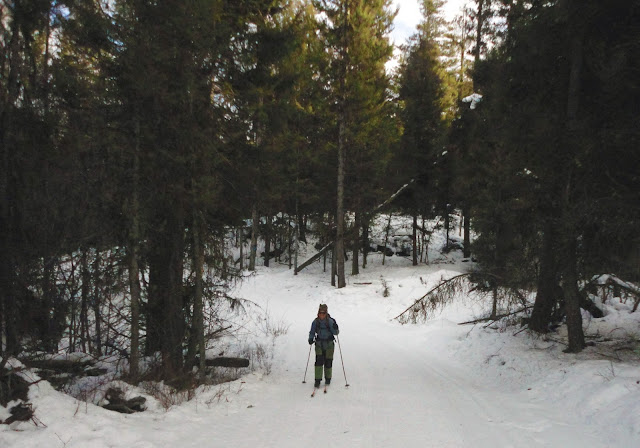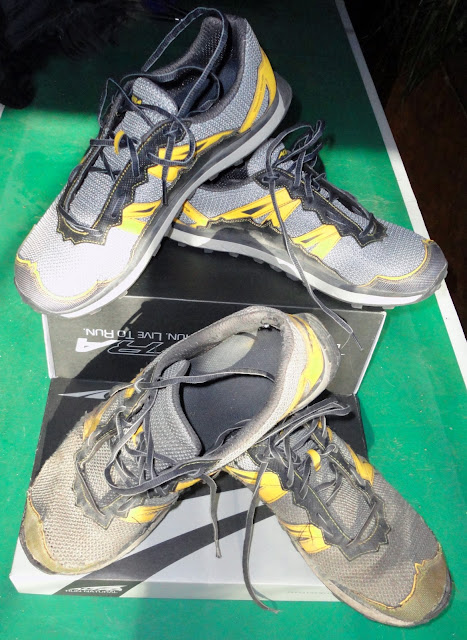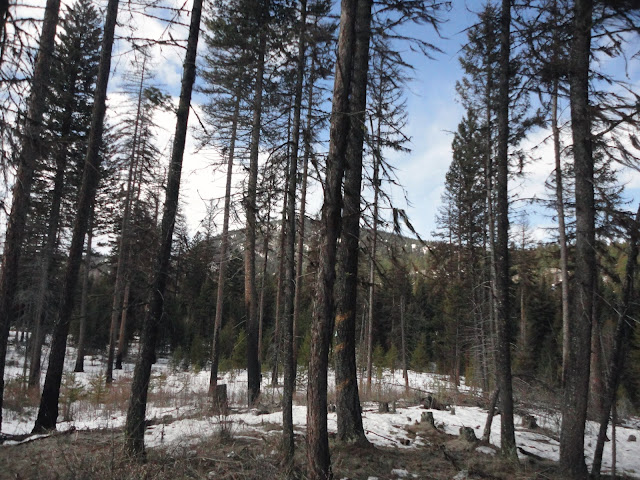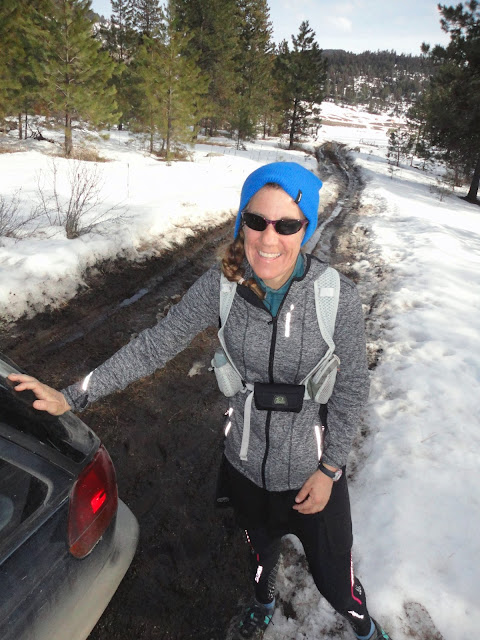By Kathy Vaughan
The promise of sunshine and warmer temperatures helped my friend Lisa and I choose this day for our second Highlands Challenge of the season. We would ski all of the trails in the Highlands Sno Park in the Okanogan Highlands in one go, a total of 30 miles of skiing. This would be our 3rd ultra-distance ski.
But on this early morning, the sky was gray and the temperature remained cold when Lisa and I met at the trailhead at 7:30. Lisa is a great cross-country skiing partner. We have a lot in common, like following a vegan diet and enjoying what grows from the earth. She makes wonderful soaps and pine needle baskets. We first met at a local winter ice fishing festival several years ago. I was selling little scrap fabric & wool dolls that I make while she was vending her wares.
During the summers, she works on trails. She heads out into the Pasayten Wilderness, carrying everything she needs on her back plus a huge cross-cut saw and clears the trees that have come down across the trails over the winter. She goes out for 9 day stretches at a time, no matter what the weather. Early season can mean traveling through lots of snow and making her way across waist high, early season creeks, swift with snow melt. My 19 year old daughter Angela went out on her first ever “hitch” with Lisa last summer and no matter what their circumstance (traversing a snowy slope under a cornice of snow, coming across a wolverine, unhappy to see them) she said Lisa always held her cool. That has proven to be true. She always has a smile on her face.
 |
| My excellent ski partner Lisa. |
We decided to start our ski in the lower meadow as icy conditions might still be hanging on higher up from the overnight cold. My large capacity Nathan vest was loaded with 2 water bottles; a bean burrito; soy jerkeys; 2 Hammer Perpetuem flasks; chocolate peanut butter balls to share, which I had made special for the trip; toe warmers; a space blanket; a small first aid kit; a ziplock with tums, ibuprofen and ginger chews; and a down puffy jacket. We would pass by our cars in the afternoon and at that time I would pick up my headlamp and sternum light, change into dry socks, have a sip of hot coffee from my thermos, pick up some new trail food, and refill my water bottles. I had a dry merino wool sweater and a thermal running jacket to change into if I needed. I could also grab a heavier pair of gloves for later in the day skiing. I knew Lisa had made similar preparations, which made me feel comfortable.

As it turned out, it was very icy and stayed that way for the time it took us to ski the area of the park I call the Antoine side. This section sits at the base of Bonaparte Mountain and is in sight as you climb up to 4,600 feet, the highest point in the park. The Antoine Loop itself is 8.6k and then all kinds of trails meander and connect the outer loop. This made for some repeats of certain sections of trail. Overall, we felt very organized in our route compared to completely winging it our first time we took on this challenge.

Skiing in icy conditions is sketchy. We had both chosen to use our lighter weight nordic skis rather than our shaped, Fischer back-country skis. The ones we left behind would have given us more control on the downhill and more surface for climbing. As it was, our narrow skis were skittery and loud as we wedged until our quads burned on the downhill and used every technique we knew for the climbing-herringbone, scooching, simply lifting our skis in a type of walking movement and sometimes even sidestepping up crazy steep hills. My ankles and arches were getting tired from all of the angles I kept having to use with my feet. It was challenging and yet still fun to be out in the snow and fresh air. The idea of waiting for a better day was not, in our minds, a possibility. We would keep on moving forward. The date being March 4th made it perfect.
After completing the Antoine side, we skied down a narrow, windy and steep trail with barb wire fencing on either side. This trail is called “Goshawk” and in good conditions is one of my favorites. In the ice, it was exciting! We soon passed a barrel of tar, peeled poles soaking in it that would later be used as fence posts. This was an interesting trail side scene. You never know what you might see in this remote, yet mostly well-groomed, nordic park. We later skied by an old piece of logging equipment with a wooden cab.

We bottomed-out in a meadow, the sun now shining. The tracks the groomer had set made for fast skiing on this softening trail. We were headed for “Ranger's Run”, a steep Black trail (Most Difficult) in the park's rating system. At the top of the short climb, was a sweet little meadow with distant views of the North Cascades. It was time to stop for a break and I knew just the tree. We stopped at the base of a huge pine. I had stopped here once before on a solo ski, noticing that I could sit on the lowest branch and lean back against the tree while I ate lunch.
 |
| Lisa studying the map for the Whitetail side. |
This time of winter, the snow begins to melt out from underneath trees and large rocks. These are nice places to rest for a minute, or make any adjustments. I love these spots. After months of being surrounded by a deep blanket of snow, it evokes all the feelings that come with early spring to see the earth, dried grasses and bare rock now showing.
After leaving the tree, we had only the drop from the meadow on icy trail under trees (which usually means lots of debris & small ice chunks) and a short hill to climb to reach our cars. Careful skiing got us down just fine.
We'd been on the trail 6 hours and 20 minutes by the time we got to the small parking area. It was nice to put on dry socks and enjoy some hot coffee. I was glad to be off of the icy Antoine side and had noticed earlier in the morning that Jack, the groomer, had been out. I was ready to see where he had been, knowing that anything he groomed would be in better shape and make for funner, faster skiing. I grabbed a couple more chocolate peanut butter balls, a small ziplock of wasabi almonds and changed out my Perpetuem bottles. Lisa had been sharing her chewy dried bananas with me. I knew it would be important to keep nibbling on food to have the energy for skiing.
This side of the park I call the Whitetail side. We started out again on the other side of that same lower meadow where hours earlier we had begun our day. The tracks were fast and we made good time on our approach to a trail called “Hej Bue”. Not being clear on how to pronounce it, my goofy husband Ras likes to call it “heggie booie”. This would take us to a slightly higher meadow “Sunshine Meadow” and then a technical, slow climb up “Twista Vista”, which most skiers like to come down rather than climb. On this icy day, we chose to climb it.

Of course when we got to the start of Twista, we could clearly see where Jack had been with the groomer and coming down it would have been a blast. Oh well. We began to climb, wrenching our ankles as we herringboned and maneuvered up these banked switchbacks. At least the snow was churned up enough from the groomer for us to have good conditions for climbing. I thanked Jack many times both out loud and in my head. After many hours on the trail either running or skiing, I often just talk out loud, sometimes shout.
At the top, we were gifted with an awesome downhill. It was well earned and greatly appreciated. It felt good to fly freely and smell the damp trees in the creek bottom as the descent ended. Now one short, fun and well-groomed out n'back and then the 3.6k climb to the turn around point. At the turn around, it would be all downhill to our cars.
 |
| Kathy on the final climb. |
The climb was long and tedious, but towards the top we could glide along with less effort as the intensity of the slope lessened. Before we knew it we had reached the top of our final climb in our 30 mile day. I was happy and let out one of those carefree shouts of joy, ski poles thrust into the air. No one else had climbed up to here today and it was a blast to take off down the hill on the fresh corduroy. I was filled with glee as I skied, my mind relaxed, feeling at one with my surroundings. It was just turning to dusk and a few stars were starting to show. The wind had died down and all was quiet. Lisa and I skied down the road to our cars from the upper lot after completing the Whitetail side and our 2nd Highlands Challenge of the season. Slowly and carefully we made our way along the shoulder of the plowed forest service road and lost the last of the light as we finished. We had skied for 10 hours and 10 minutes.
I always have some comforts ready to grab easily when I finish a day on the trail. This time I had a blanket to sit on & one to wrap around me, the rest of my thermos of coffee, cozy wool- lined boots to slide my worn feet into and new memories dancing through my head.
Last week I had been on a ski trip in the Rendezvous Mountain area near Mazama, in the foothills of the North Cascades. Lisa had been along and another gal Rise', who wrote a cool little bluesy tune on her guitar called “Diamonds in the Snow” for all of us. She sang it throughout our stay in the cabin. Lisa and I had remembered it earlier in the day as we skied. The snow sparkles likes diamonds in the sunlight of day, but now, sitting in the dark, all that sparkled were the stars outside and a sense of peace inside.
































